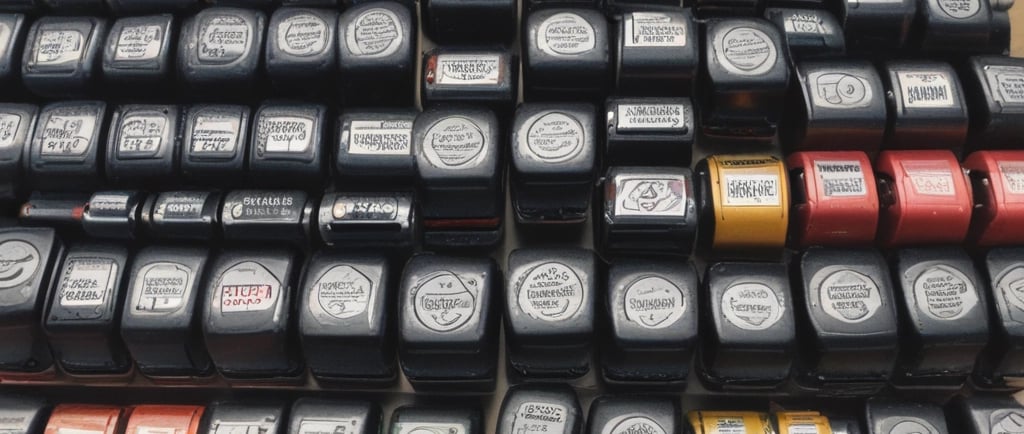Are Makita Chargers Fast Enough? A Deep Dive into Charging Speeds
MAKITA GENERAL
10/16/20254 min read


Understanding Charger Types and Technologies
When it comes to Makita chargers, several types are available on the market, each designed to meet specific user needs. The most common types include standard chargers, rapid chargers, and dual-port chargers, all aimed at optimizing the charging experience for Makita users.
Standard chargers are typically the baseline option, providing a steady charge to batteries, especially those powered by Lithium-ion technology. These chargers are ideal for users who do not require quick turnovers and are often engaged in tasks that allow for longer charging periods. While they do not boast the fastest charging speeds, their efficiency ensures batteries are charged safely and adequately for everyday use.
On the other hand, rapid chargers significantly cut down on charging times. Known for their fast-charging capabilities, these devices utilize advanced technologies to permit higher charging currents, which enable faster replenishment of battery power. Many users seeking to minimize downtime during intense projects find rapid chargers highly beneficial. They can often charge a Makita Lithium-ion battery to a usable level in a matter of minutes, making them a preferred choice for professionals.
Dual-port chargers further enhance flexibility by allowing users to charge two batteries concurrently. This can be particularly advantageous on job sites that demand continuous power tools. The ability to keep multiple batteries charged and ready for use eliminates the wait time often associated with having just one charging device.
In comparison to other brands, Makita's charging technologies stand out due to their innovative design and user-centric features. Their Lithium-ion batteries paired with rapid and dual-port options maintain a competitive edge in the tool market, providing users with faster, more efficient charging solutions. Consequently, understanding the variety of chargers available and their respective technologies aids consumers in selecting the right equipment to suit their operational requirements.
Charging Speed: What to Expect
Makita has established a reputation for producing high-quality power tools, and an essential factor that underpins their performance is the efficiency of their chargers. When evaluating Makita chargers, the charging speed is a significant consideration for both professionals and DIY enthusiasts. Depending on the battery capacity, the time taken to fully charge a battery varies, making it crucial to understand what to expect from these chargers.
Makita offers a range of battery capacities, including 2Ah, 3Ah, and 5Ah. The 2Ah battery typically requires around 30 minutes to charge completely, providing a quick turnaround for users needing minimal downtime. In contrast, the 3Ah battery can take about 45 minutes, while the larger 5Ah battery, designed for extended use, usually needs around 1 hour to achieve a full charge. This performance places Makita chargers among the more efficient options available on the market.
In real-world testing, comparisons illustrate that Makita chargers not only meet but often exceed consumer expectations. For instance, when placed side-by-side with competitors like DeWalt and Milwaukee, Makita's chargers frequently demonstrate faster charging times for similar battery capacities. Furthermore, with advancements in technology, the latest Makita Rapid Optimum chargers can monitor battery conditions and adjust the charging speed, optimizing performance and extending battery life.
Consumer feedback reinforces the reliability of Makita chargers, with many users expressing satisfaction regarding their efficiency and performance. The quick charge times coupled with the longevity of the batteries demonstrate that Makita chargers are capable of keeping up with the demands of various tasks. Overall, prospective buyers can expect a robust charging solution that aligns well with their operational needs.
Factors Affecting Charging Time
The charging time of Makita batteries can be influenced by several factors, which are crucial to understand for optimizing performance and longevity. One primary factor is the ambient temperature. Batteries are sensitive to temperature fluctuations; higher temperatures can enhance charging speed to a certain extent, but excessively high temperatures can lead to thermal runaway, potentially damaging the battery. Conversely, low temperatures can slow down charging efficiency, causing batteries to take longer to reach full capacity. Therefore, maintaining an optimal temperature range during charging is critical.
Another significant aspect affecting charging time is the age of the battery. Over time, batteries naturally degrade due to repeated charge cycles, which can result in decreased capacity and increased charge time. Older batteries often face higher internal resistance, resulting in slower charging. It is advisable to regularly assess the condition of the battery and replace it when performance declines noticeably to maintain efficiency.
Additionally, the frequency of charger usage plays a role. Frequent use of a charger without giving it adequate time to cool may lead to reduced performance. This is particularly relevant in commercial settings where chargers are subject to continuous demands. It is recommended to allow the charger to rest periodically to prevent overheating, which can affect its efficiency. Furthermore, using the appropriate charger model for the specific Makita battery is essential. Chargers designed for higher amp-hour batteries usually charge faster than those for smaller capacity models.
To maximize charging efficiency, it is advisable to store batteries in a climate-controlled environment, avoid extreme temperatures, and consider rotating better-performing batteries with older ones to maintain optimal performance across the fleet of tools. By understanding how these factors affect charging time, users can take actionable steps to ensure swift and effective charging of their Makita batteries.
Final Thoughts: Are Makita Chargers Worth It?
In the competitive market of power tools and their accessories, Makita chargers have positioned themselves as a prominent choice for both professional users and DIY enthusiasts. The charging speeds offered by these devices are a crucial factor in determining their overall value. As explored throughout this article, Makita chargers are designed to deliver efficient power management and rapid charging capabilities. Many users have reported significant improvements in productivity due to the rapid charging times, which often range from 30 to 70 minutes for a full charge, depending on the battery model.
Expert reviews frequently commend Makita for its commitment to innovation, particularly in the realm of lithium-ion battery technology. The utilization of features such as Automatic Battery Management System (ABMS) enhances the safety and longevity of the batteries, addressing concerns regarding overheating and overcharging. Users appreciate these safety measures, highlighting that they can trust the Makita brand for day-to-day use without worrying about battery failure in critical moments.
However, while the advantages of Makita chargers are numerous, there are also considerations to keep in mind. Some users have pointed out that, although these chargers offer impressive speeds, they can be more expensive than competitor options. This raises a valid question: do the enhanced features and rapid recharge times justify the investment? User testimonials often emphasize that the quality and longevity of the tools and batteries ultimately make the higher initial cost worthwhile.
In conclusion, Makita chargers generally offer excellent charging speeds, safety features, and durability, making them a strong option for those seeking reliable performance. While cost may be a factor for some, the overall efficiency and user satisfaction suggest that opting for Makita chargers is a sound decision for both professionals and casual users alike.
